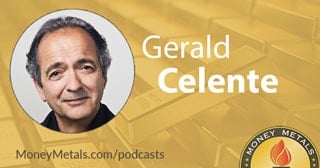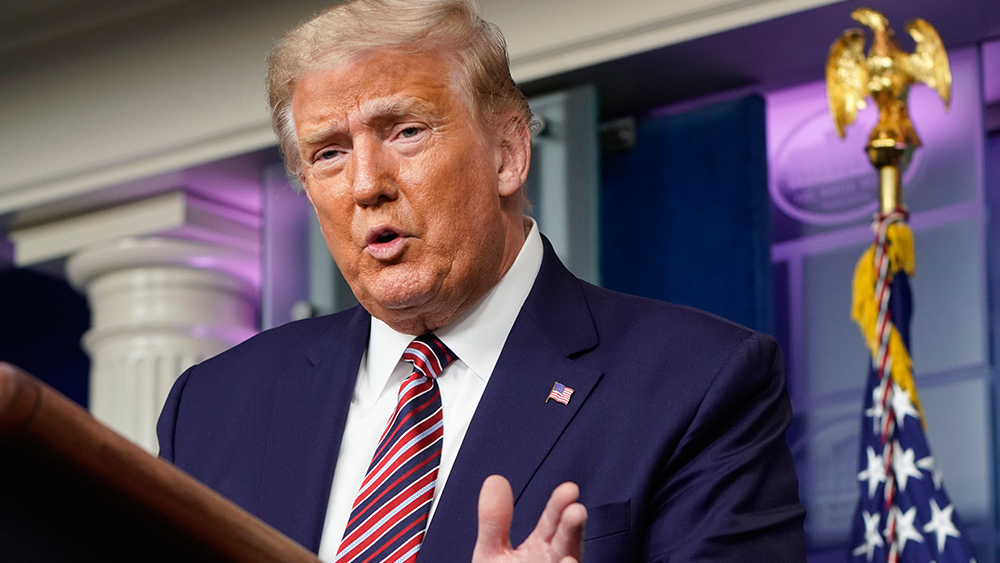Gerald Celente Speaks Out on Iran, Coronavirus, Gold, and Global Protests
by Mike Gleason, Money Metals:

Welcome to this week’s Market Wrap Podcast, I’m Mike Gleason.
Later in today’s program we’ll hear from the one and the only Gerald Celente of the Trends Journal. The top trends forecaster shares his thoughts on why protests in many nations throughout the globe are a driver in central banks continual printing of a massive amount of money. Gerald also weighs in on the coronavirus situation, the U.S. strike on Iran earlier this month, and why he believes gold may hit a new all-time high as soon as this year. So don’t miss another jam-packed and incredible interview with Gerald Celente, coming up after this week’s market update.
As the coronavirus continues to spread, global financial markets are showing the symptoms of investor unease.
Chinese and emerging markets stocks have taken a big hit over the past several days, as have commodities. Crude oil prices have dropped 13% over the past two weeks while copper has seen a 12% drop on concerns about the impact of the China virus on global demand.
Gold and silver, meanwhile, are faring much better as some investors seek out the precious metals for safe haven protection. For the week, gold prices are up 1.0% to trade at $1,589 an ounce. Spot silver currently checks in at $18.11 per ounce, down a slight 0.3% since last Friday’s close.
Turning to platinum, it is taking a 4.4% hit to the downside this week to trade at $966. And finally, palladium is cooling off a bit this week, dropping 5.8% to bring its price per ounce to $2,308.
Markets brushed off the Federal Reserve’s policy announcement on Wednesday. The Fed kept rates unchanged as expected. Chairman Jerome Powell reiterated the central bank’s policy of “symmetric” inflation targeting. That translates into allowing inflation rates to rise above the Fed’s 2% target for a sustained period to make up for recent periods where it ran below 2%.
Obviously, the central planners on the Federal Reserve Board remain unsatisfied with the level of price increases consumers face. Food and fuel are still too cheap, they say. Medical care and college tuitions are too affordable for too many people.
And it’s all because the dollar isn’t depreciating fast enough for the Fed’s arbitrary inflation target to be hit.
The U.S. Dollar Index is firming so far this year. And the threat of a global pandemic has policymakers concerned that consumers and businesses will hunker down and further depress price levels in dollar terms.
The mainstream media and political correctness police have other concerns as top priorities. No, it isn’t about the risk of Americans being infected from international travel into the U.S. It’s about the risk of Chinese people being stereotyped and subjected to “racism” and “sinophobia.”
Meanwhile, CNN alerted Americans to the alarming fact that President Donald Trump’s Coronavirus Task Force isn’t “diverse” enough. Badgering people about what they look like is apparently helpful in fighting the spread of a deadly disease. Thank goodness there are journalists willing to do such brave and heroic work!
And thank goodness the Fed stands ready during any potential national emergency to pump limitless amounts of cash into the repo market and banking system.
On Thursday, the Federal Reserve Bank of New York pumped another $83 billion in new liquidity into short-term lending markets. The move saved the banks from having to sort out their own illiquidity issues for another week.
Unfortunately for other industries – automakers in particular – the Fed can’t liquify the markets for palladium and rhodium by injecting fresh supplies of metals.
The markets for these critical metals used in catalytic converters remain beset by physical supply deficits. This in turn is causing unusual spikes in leasing rates and distortions in pricing mechanisms as bid/ask spreads widen.
According to Refnitiv GFMS, the palladium market will operate under a supply deficit of 883,000 ounces this year. Prices may have to rise even higher for the already pricey metal before supply and demand reach an equilibrium.
We would caution that it’s pretty late in the cycle to be a buyer of palladium here. The good news is that it’s still very early in the cycle for other metals, including lagging platinum and dirt-cheap silver.
Consider that in 2016, palladium began the year trading around $500/oz. Prices have since quintupled.
Silver bottomed at the very end of 2015 just below $14/oz. Prices advanced strongly that next year before falling back into a major trading range. Silver has managed to make only modest net progress.
A mere quadrupling from its late 2015 low would take silver over $50 – and that would likely just be the warm-up phase that finally establishes new all-time highs. Then the explosive phase could begin that sees new high after new high, week after week – just like we’ve seen in palladium over the past year.
When silver and gold prices are making new records, perhaps the Fed will finally have the inflation it so desperately wishes for. Pushing inflation rates back down, though, won’t be so easy. Once the genie is out of the bottle, it can’t exactly be put back in.
Well now, without further delay, let’s get right to this week’s exclusive interview.
Loading...



